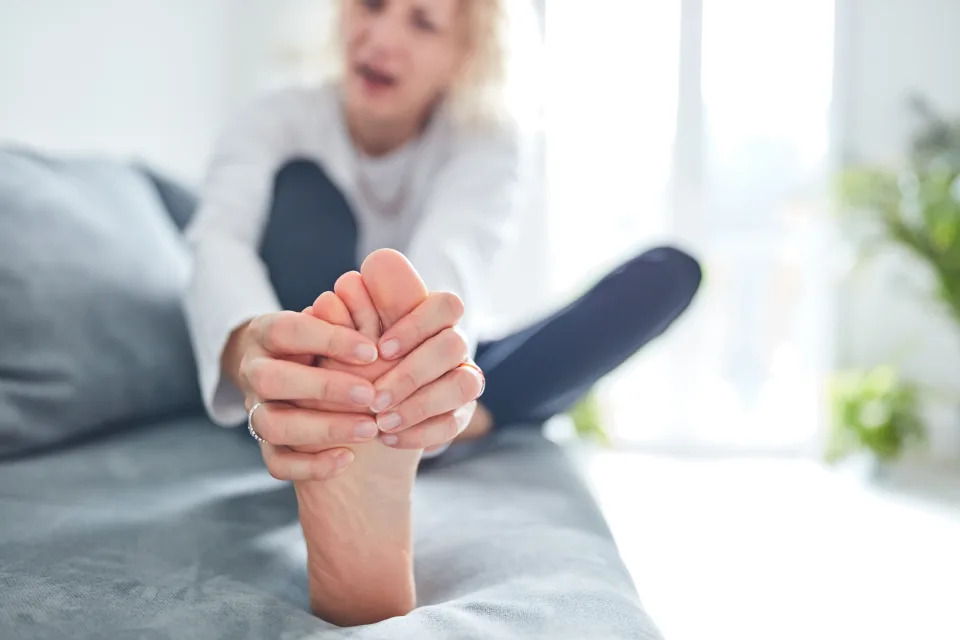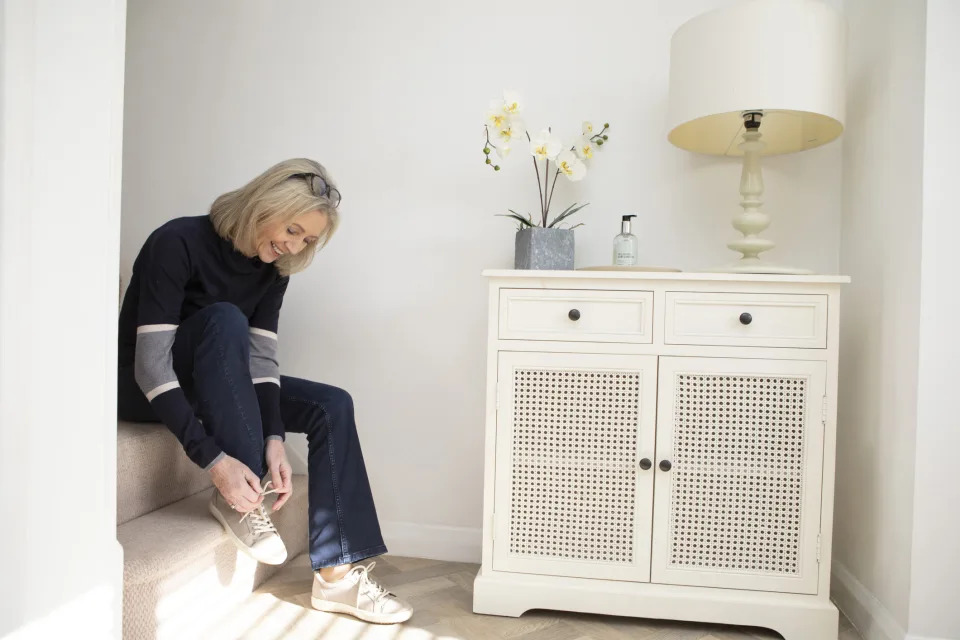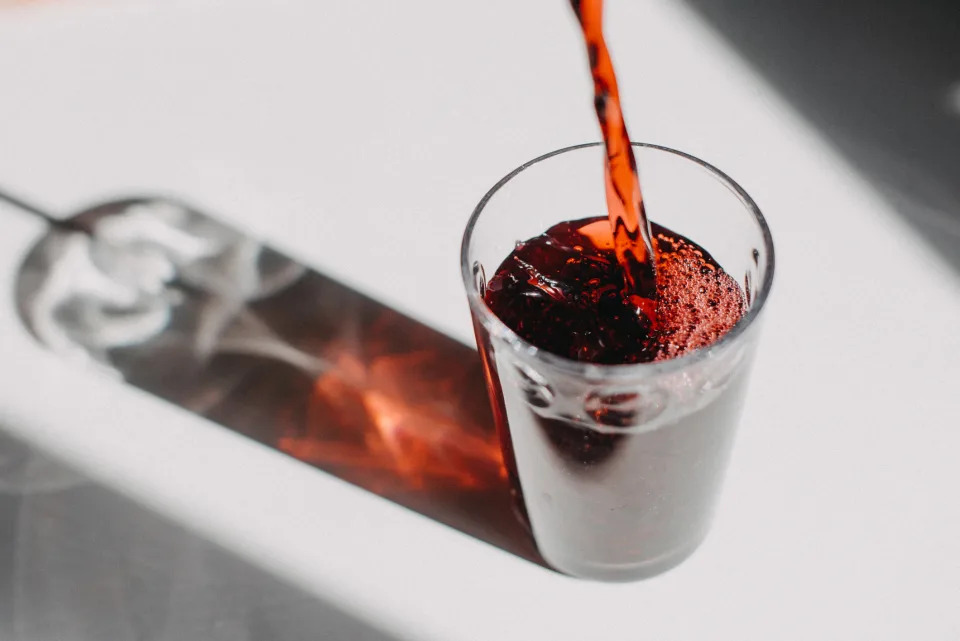4 Common Causes of Big Toe Joint Pain, Plus Home Remedies That Help
Have you ever kicked off your shoes after a long day and realized your big toe was throbbing? If so, you aren’t alone. Big toe joint pain is a common, but crippling, foot problem. Thankfully, various remedies can ease discomfort and restore your mobility. Here, podiatrists explain why big toe joint pain occurs and how to treat it.
Why do so many people experience big toe joint pain?
Big toe joint pain is common because of how the human foot is structured. “The big toe is the last part of the foot to leave the floor in a normal walking pattern,” explains Milica McDowell, MS, DPT, a doctor of physical therapy at Gait Happens.
“It’s primarily responsible for pushing off to propel you forward,” she adds. “Due to this biomechanical responsibility, the big toe takes a lot of stress during the hundreds of thousands of steps we take each year.”
Footwear also contributes to discomfort in your toe bones. “Shoes that squish the toes together or are very pointy are huge contributors to big toe pain,” McDowell adds. “Additionally, wearing high heels places excessive stress on the big toe, which can also contribute to the problem.”
What big toe joint pain feels like

Big toe joint pain affects everyone differently, and symptoms vary depending on the underlying cause.
“Sometimes, big toe joint pain is dull and aching, [but other times] it’s sharp and shooting,” says board-certified podiatrist Elizabeth Daughtry, DPM, FACFAS. “Typically, the joint pain happens intermittently or occasionally at first. But it can progressively worsen with more deterioration of the joint space.”
When that happens, Dr. Daughtry says the pain can become chronic, interfering with your ability to walk and exercise in the long term.
4 causes of big toe joint pain and how to treat them
Regardless of what’s causing your big toe pain, you don’t have to suffer. Let’s explore some of the most common causes and treatment recommendations.
1. Osteoarthritis
This is a type of arthritis caused by wear-and-tear. It causes the cartilage — smooth, connective tissue that reduces friction on the joints — to deteriorate over time. And hallux rigidus, specifically, is arthritis of the big toe.
“The reality is that most of us will develop some sort of arthritic changes in the big toe joint as we age,” says board-certified podiatrist Robert Conenello, DPM, FACFAS. “These changes are accentuated by our body types, gait patterns (how we walk), weight, activities and most importantly, our shoes.”
With less cartilage, the bones inside the big toe joint rub against each other. This leads to swelling, pain and a stiff big toe.
How to treat big toe joint pain caused by arthritis
Over time, osteoarthritis affects your walking pattern or gait. That’s because as cartilage deteriorates, the surrounding muscles and soft tissues must work harder to hold your big toe straight.
To the rescue: Toe yoga. Strange as it sounds, toe yoga is effective at preventing this overcompensation. How so? It strengthens the thin, intrinsic muscles at the front of your foot.
Many toe yoga exercises exist, but Dr. Conenello recommends starting with the big toe extension. During this exercise “you try to isolate your big toe from your other four toes by moving it up and down,” he explains. “This increases your mobility by strengthening your toe muscles and their flexibility.”
Here’s how to do it:
- Sit or stand with your feet flat on the floor.
- Lift your big toe while pressing your other four toes into the ground and hold for 3-5 seconds.
- Place your big toe back on the floor.
- Repeat 5-10 times on both feet.
2. Bunions
“A bunion is a bump on the outside of the big toe that develops either because of genetics or from wearing inappropriate shoes that push the big toe against the second and third toes,” McDowell says.
“When your big toe is in the ideal anatomical position, it should be pointed straight forward at 12:00 on a clock,” she explains. “But when you have a bunion (also known as hallux valgus), your toe might point to 1:00 or even 2:00.”
How to treat big toe joint pain caused by bunions

“Wearing a variety of different shoes is probably the best thing you can do for [bunion-related toe pain],” Dr. Conenello says. “When you want your foot to really perform, you need to wear shoes that have more space in them.”
Specifically, he recommends wearing wide toe box shoes so your toes don’t squeeze together. Dr. Conenello says It’s ok to wear high heels and other dress shoes occasionally, but wearing them daily can exacerbate your symptoms and cause the bunion to grow.
3. Gout
“Gout is a type of inflammatory arthritis caused by a buildup of a specific protein, [called] purine, in the bloodstream,” Dr. Daughtry says. “When the body is unable to get rid of the excess protein quickly, or if a person produces too much of it, it can lead to the formation of [uric acid] crystals. These crystals then attack the [big toe] joint, leading to an inflammatory reaction.”
How to treat big toe joint pain caused by gout

Gout is a complex form of arthritis that typically requires treatment with prescription medication. However, Dr. Daughtry says healthy lifestyle changes can complement your efforts. She recommends avoiding foods and drinks high in purine, including shellfish, certain meats (especially red meat) and alcohol.
You can also sip tart cherry juice. This won’t keep gout from worsening, Dr. Daughtry says, but it can reduce the amount of uric acid in your blood. In fact, a study in Current Developments in Nutrition found that people who drank 8 oz. of tart cherry juice daily for four weeks experienced a significant drop in uric acid production.
4. Big toe sprain (‘turf toe’)
You might experience big toe joint pain due to a sprain if you run or play sports like pickleball. This injury occurs when the ligaments, muscles and other soft tissues surrounding your big toe extend beyond their normal range of motion. Telltale symptoms of a big toe sprain include swelling, bruising and reduced mobility.
How to treat big toe joint pain caused by a sprain
Dr. Conenello says minor big toe sprains often improve with rest and ice. Icing your toe every few hours for 20 minutes reduces inflammation and promotes healing.
More severe toe sprains may benefit from taping. “Taping your toe with athletic or kinesiology tape helps stabilize it while it heals,” McDowell says.
Don’t wait to get screened for big toe joint pain
“The big toe joint is extremely important for balance, stability and propulsion,” Dr. Daughtry says. “Protecting it is of the utmost importance. Once the joint is destroyed, treatment options are limited.”
If you suffer from big toe joint pain and it continues for more than a few days, make an appointment with your doctor or podiatrist. She can diagnose the underlying cause and make personalized treatment recommendations.


